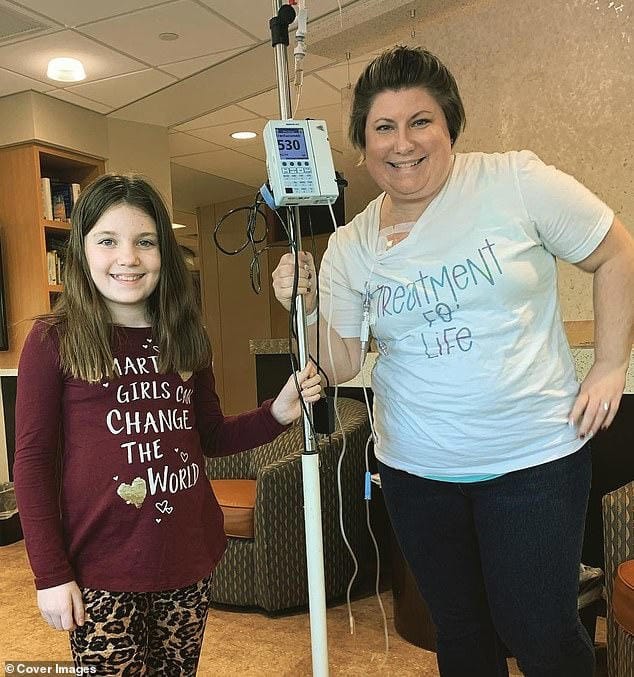A Silent Warning: The Journey from Misdiagnosis to Stage 4 Cancer
It was mistakenly believed by many, including healthcare professionals, that the symptoms experienced were simply normal aches and pains that would eventually resolve on their own. The pain in the back, which had gradually intensified over time, was interpreted as something minor—perhaps a strain from daily activities or poor posture. It was often dismissed, shrugged off, or attributed to fatigue and stress, common issues that many people face without concern. No immediate suspicion of something more serious was raised, and therefore, diagnostic tests were not frequently ordered initially. Instead, a series of routine consultations were conducted, during which the discomfort was described but not strongly emphasized as a cause for alarm.

Within the medical community, it was believed that the condition was benign based on the symptoms presented at the time. The potential for a malignant diagnosis was not considered, and it was assumed that the discomfort could be managed with simple remedies such as pain relievers, physical therapy, or lifestyle modifications. It is often the case that early signs of severe ailments are overlooked or underappreciated because they mimic much less dangerous conditions. The hope was that the pain would diminish and that no further medical intervention would be necessary. Consequently, many medical reports suggested conservative treatment, and reassurance was provided to the patient.

As months went by, the persistent pain continued to be experienced, but it was still perceived as manageable. The physical health was generally maintained or appeared to be normal during routine check- ups. No glaring signs of any serious illness were apparent at this stage. The symptoms were considered to be part of another common, non-life-threatening issue. The emotional and mental states of the individual were often positive, with a focus on everyday tasks and daily routines. Stress levels varied, but no significant concern about health deterioration was expressed or anticipated.
However, beneath the surface, a silent shift was taking place. The disease process was quietly progressing, unnoticed and undiagnosed. The pain that was felt was, in reality, an early warning sign of a more aggressive and dangerous condition that was developing within. It was only after a critical point was reached that the true nature of the illness was uncovered. When finally diagnosed, it was revealed that it had advanced to a much more severe stage—specifically, stage 4 cancer—a diagnosis that was shocking and heartbreaking.
The discovery was made after medical imaging and examinations were performed, which uncovered a malignant tumor that had spread extensively. It was then understood that the initial symptoms had been
manifestations of an underlying, rapidly progressing disease. It was during this period that the diagnosis was officially announced and the prognosis was discussed. The information conveyed was that only months of life, at most, could be expected. This prognosis was devastating, and the emotional impact was profound, affecting not only the individual involved but also their loved ones.
The diagnosis marks a stark contrast to the previous belief that the pain was benign and insignificant. The entire experience highlights how easily serious conditions can be concealed behind benign symptoms,
especially when early signs are subtle or misinterpreted. It also underscores the importance of vigilant
medical attention when persistent symptoms are experienced, no matter how mild they seem. The medical
community continues to learn about the significance of early detection and the challenges associated with diagnosing aggressive diseases at an early stage.

In reflection, it is evident that many factors contributed to the delay in diagnosis. The initial symptoms were undervalued, and the healthcare approach was guided by the assumption that the pain was harmless. The reliance on conservative management strategies might have inadvertently contributed to missed opportunities for earlier intervention. The emotional burden brought on by the late diagnosis is considerable, and feelings of regret, frustration, and helplessness are often felt when the truth is finally uncovered.
It is hoped that sharing this story will encourage others to listen carefully to their bodies and seek medical advice when symptoms persist or worsen. The importance of comprehensive evaluation cannot be overstated, especially when dealing with symptoms that do not resolve over time. Early detection and intervention are crucial in improving prognosis and quality of life. The journey from initial misjudgment to the devastating realization of a late-stage diagnosis serves as a poignant reminder of the unpredictability of health and the vital importance of vigilance.
Throughout this experience, a profound appreciation for life and health has been gained. Despite the difficult circumstances, resilience and hope have been fostered through support and understanding from others. The narrative underscores that while medical science has advanced, some diseases remain challenging to detect in their early stages. Yet, it is within each individual’s power to advocate for their health and to pursue thorough medical evaluations when something does not feel right.
Ultimately, the story of misdiagnosis and late detection serves as a testament to the human spirit and the importance of perseverance. The hope is that nobody else will have to face such a shocking realization, and that continual advancements in medicine will lead to more accurate early diagnoses and better outcomes for those affected by similar conditions. The experience has been a stark reminder that health should never be taken for granted, and that vigilance, attentive care, and early intervention are essential to safeguarding well-being.














